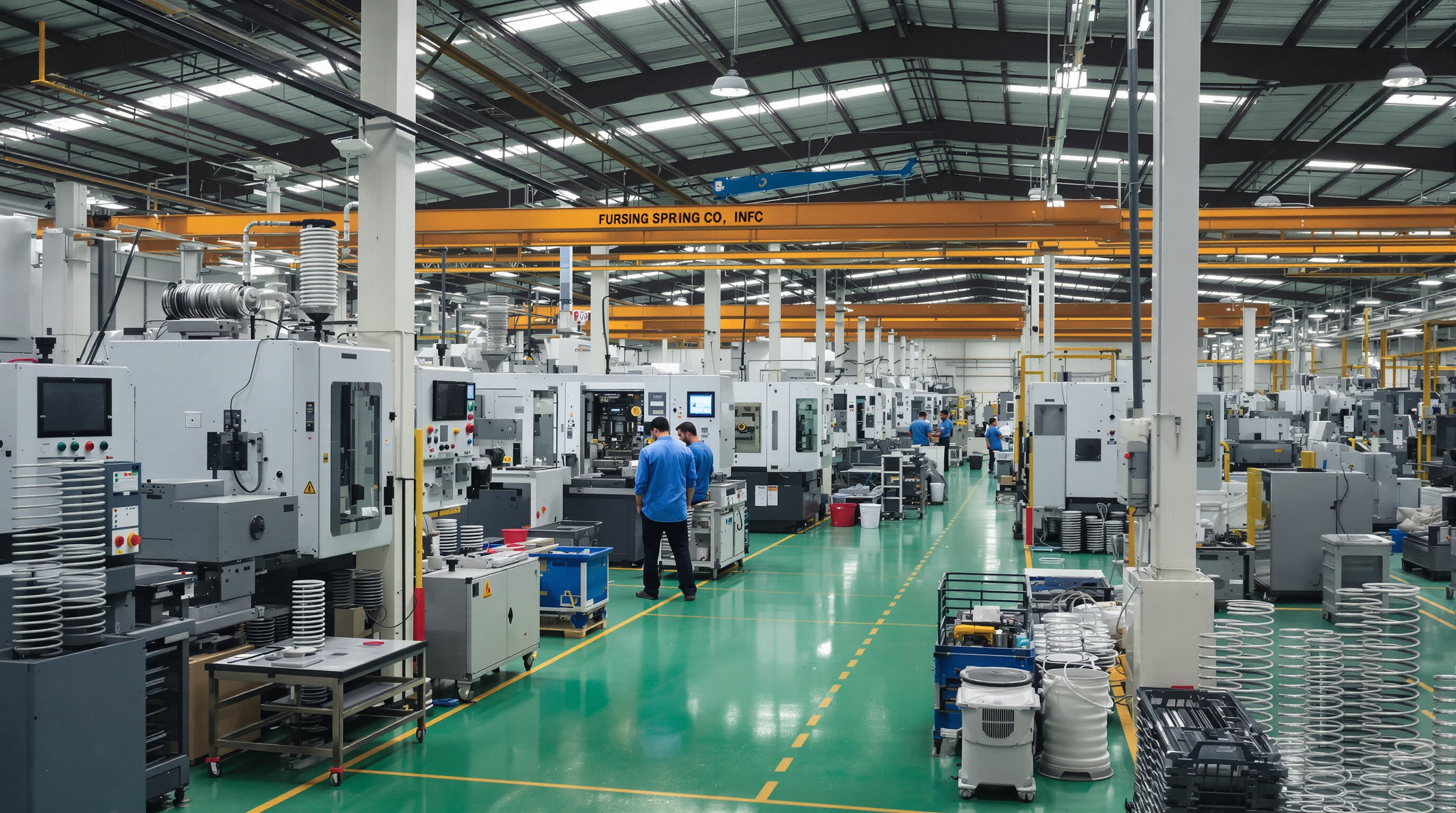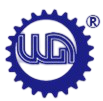Understanding Key Types of Spring Machines and Their Applications
Overview of Spring Machine Types and Core Functions
When talking about spring production equipment, there are basically three main types out there: CNC machines which run on computer controls, good old manual setups for when things need to be done by hand, and then we have those special coiling systems. The CNC versions really shine in situations where precision matters most since they can be programmed for exact specifications. Manual machines still find their place though, especially during prototype development or when only a few units are needed. Coiling machines work wonders for making different kinds of springs like compression, tension, and torsion varieties. They do this by carefully feeding wire through various tools at controlled rates. According to industry data from last year's Spring Manufacturing Report, around seven out of ten industrial spring applications actually need these custom coiling setups just to handle proper load distribution or movement demands across different industries.
CNC Spring Machines in Modern Manufacturing: Precision and Automation
Spring machines with CNC technology can maintain around 0.01 mm precision, which is why they're so important in manufacturing parts for things like aircraft engines and medical implants where tolerances matter a lot. These machines have these fancy closed loop systems that constantly tweak the wire tension and how tightly the coils form, cutting down on setup work almost half compared to older manual setups. Some studies in the field show that when factories switch to CNC controlled production, their spring rate readings stay pretty much the same from batch to batch, something like 99.7 or 99.8 percent consistent depending on who's measuring what exactly.
Manual Spring Machines for Low-Volume or Prototyping Needs
Manual machines excel in cost-sensitive scenarios requiring frequent design tweaks. Operators can adjust coil diameter and end configurations without reprogramming, though throughput rarely exceeds 100 springs/hour. These systems are ideal for custom automotive suspension springs or experimental prototypes, where upfront CNC programming costs outweigh benefits.
Spring Coiling Machines for Compression, Tension, and Torsion Springs
The coiling machine works by spinning an arbor while feeding wire through guides to form springs according to their required force characteristics. For compression springs, getting the pitch just right is absolutely critical if we want even load distribution across the entire length. Torsion springs tell a different story though they need careful adjustment of their angle when twisted so they perform as intended. These days, cold coiling methods have really improved for materials like stainless steel and music wire. The process actually maintains most of the original material strength, which means manufacturers can cut down on those costly heat treatments after production by around 30%. That's a big deal for both quality control and bottom line savings.
Aligning Spring Machine Selection with Production Volume and Output Goals

Matching Machine Capacity to Production Demand
Selecting spring machines that align with your production targets prevents costly mismatches. Industry studies show manufacturers using equipment sized to their output needs achieve 34% higher throughput than those with under/over-sized systems (Dayuan Research, 2023). Key factors include:
- Peak order volumes: Machines must handle maximum monthly demand without compromising cycle times
- Batch sizes: Frequent small orders favor flexible setups, while large batches benefit from automated workflows
- Growth projections: Opt for systems with 15-20% excess capacity to accommodate future scaling
High-Volume Production Advantages of Automated CNC Spring Machines
CNC spring machines cut down setup time by about 60 percent when compared to traditional manual methods thanks to their programmable tools and automatic feeding systems. With a tolerance range of plus or minus 0.01 mm, these machines maintain around 99.8% consistency even during long production runs exceeding 10,000 units. This level of precision matters a lot for industries like automotive and aerospace where meeting tight specifications is absolutely necessary. The upfront investment typically ranges from 120 thousand to 250 thousand dollars, but most manufacturers find they get their money back within roughly 18 months. How? Mainly because there's significantly less waste material now that scrap rates stay below 1.2%, plus operations can run continuously day after day without breaks.
Low-Volume Flexibility and Cost-Efficiency of Manual Spring Machines
When working on prototypes or small batch runs below 5,000 units, manual spring coiling machines offer something no other equipment can match when it comes to flexibility, all while saving around 80% on initial investment costs ranging from $15k to $35k. Technicians managing these machines are able to experiment with between three and five different spring setups each hour, making them particularly well suited for research departments or companies handling special requests. Take one manufacturer based in the Midwest that makes medical devices for example they managed to slash their prototyping expenses by nearly half when they switched to manual coiling for batches sized anywhere from 100 to 500 units prior to moving final designs over to CNC manufacturing processes.
Ensuring Precision, Repeatability, and Quality in Spring Manufacturing

Why precision and repeatability matter in spring production
In automotive and aerospace applications, spring performance directly impacts safety a 0.1 mm dimensional deviation can reduce load-bearing capacity by 18% (NIST 2022). Precision ensures springs meet force curve specifications, while repeatability prevents batch failures that cost manufacturers $740k annually in recalls (Ponemon 2023).
Tolerance control: CNC vs manual spring machine performance
Modern CNC spring machines maintain tolerances within ±0.025 mm across 10,000+ cycles, compared to ±0.1 mm variance in manual systems (Spring Manufacturing Association 2023). This precision gap proves critical in medical device springs requiring FDA-mandated ±2% force consistency.
Case study: Reducing defects with a CNC spring coiling machine upgrade
A Tier 2 automotive supplier reduced winding pitch defects by 72% after replacing manual spring coilers with CNC models featuring real-time diameter monitoring. Post-upgrade, scrap rates fell from 8.2% to 2.4%, achieving ROI in 14 months.
The role of machine calibration in sustaining long-term quality
Semi-annual calibration preserves coiling head alignment within 0.003° variance, preventing the 0.15% monthly dimensional drift observed in uncalibrated machines. Leading facilities combine laser measurement tools with thermal compensation systems to mitigate metal expansion effects during continuous operation.
Material Compatibility and Coiling Process: Matching Machine to Wire and Application
Wire Diameter and Material Considerations in Spring Machine Selection
Material compatibility is really important when picking out a spring machine, and it all starts with how precise the equipment can handle wire diameters. For those serious applications such as making medical springs, machines need to maintain around plus or minus 0.05 mm accuracy. The best machines come equipped with adjustable feed systems that work well across different materials. We're talking everything from super thin 0.1 mm music wire right up to thick 16 mm high carbon steel rods used in heavy duty applications. What matters most are the material characteristics themselves. Tensile strength ranges between roughly 400 to 2000 MPa while ductility plays its part too. These factors determine what kind of tooling we actually need. Hardened steel guides tend to be the go to option whenever dealing with alloys that resist wear and tear, something every shop learns through trial and error over time.
Working with Stainless Steel, Music Wire, and Carbon Steel
When working with stainless steel in the 302 or 304 grades, manufacturers need spring machines that have parts resistant to corrosion and can maintain accurate tension settings throughout the coiling process. Otherwise, the metal tends to work harden which affects quality. Music wire, specifically SAE grades 1080 through 1095, presents different challenges because it has this really high elastic modulus around 210 GPa. That means regular machines just won't cut it. Carbon steel remains popular though since it's so much cheaper, making it great for those manual setups used during prototype development stages. And interestingly enough, when dealing with wires thinner than 1 millimeter, switching from traditional mechanical systems to CNC machines equipped with servo driven feeders actually cuts down on wasted materials significantly. Some studies show reductions anywhere between 18% all the way up to 27%, depending on how things are set up.
Cold Coiling vs Hot Coiling: Aligning Process with Material Properties
Most springs that need really tight tolerances around ±0.1 mm get made through cold coiling techniques, especially when working with softer metals such as annealed copper or aluminum alloys. When dealing with tougher stuff like high carbon steel grades SAE 1060 to 1095 though, hot coiling at temperatures between 300 and 500 degrees Fahrenheit becomes necessary. This approach cuts down on fractures during shaping processes by roughly 34%, according to recent data from material science reports in 2023. Looking at what's happening in the field these days, there's growing evidence that getting the coiling temperature right for each specific metal type can extend how long springs last before they fail under stress. Some tests show this careful matching boosts fatigue resistance by about 40% in car suspension systems where reliability matters most.
Cost, Automation, and Long-Term ROI: Manual vs CNC Spring Machines
Comparing Costs: Upfront Investment vs Long-Term Return on CNC and Manual Machines
The upfront cost for CNC spring machines runs anywhere from 65 to 300 percent more than what manual models set people back, typically around $50k to $300k versus just $3k to $25k for the old fashioned ones. But according to recent industry reports from 2024, most manufacturers find that these CNC systems start paying for themselves within 18 to 34 months. How? Well, they need way fewer workers on the floor one person can handle what used to take three or five folks doing manually. Plus, when companies crank out large quantities, the per unit cost drops by roughly 40 to 60 percent. For shops making over 10 thousand springs each month, sticking with manual equipment just doesn't make financial sense anymore because labor costs keep climbing and quality issues become harder to manage without proper automation.
Maintenance, Tooling, and Downtime Expenses by Machine Type
CNC models incur 22% higher annual maintenance costs ($8,500 vs $6,950) but achieve 92% operational uptime versus manual machines' 78—85%. Tooling costs diverge significantly:
| Expense Category | CNC Spring Machine | Manual Spring Machine |
|---|---|---|
| Tool Replacement | $1,200/year | $450/year |
| Calibration | $600/year | $1,800/year |
| Downtime Impact | 8% of production | 19% of production |
Labor, Training, and Operational Efficiency in Manual vs CNC Environments
Computer Numerical Control (CNC) systems can slash direct labor expenses by around 73 percent according to industry reports. The catch? Operators need significantly more training time than with traditional equipment. Most manufacturers report needing between 120 to 180 hours for proper CNC operation training, whereas manual machines typically take only 40 to 60 hours to get up to speed. What makes CNC worth it though is the automated error detection feature that reduces quality control workloads by nearly 60%. Manual inspections just cant keep up with the speed and accuracy of these smart systems. Still there are situations where older manual machines make better sense. For shops dealing with constant staff changes or producing small runs under 500 units where setups change frequently, sticking with manual options often proves more practical despite their higher labor requirements.
FAQs
What is the main benefit of using CNC spring machines?
CNC spring machines offer high precision and automation, maintaining tolerances within ±0.01 mm and ensuring consistent spring rate readings from batch to batch.
When should manual spring machines be used?
Manual spring machines are ideal for low-volume production or prototyping needs where frequent design adjustments are required, and upfront CNC programming costs outweigh benefits.
How do coiling machines work?
Spring coiling machines form springs by spinning an arbor while feeding wire through guides, ensuring the pitch and angle of the wire meet specified force characteristics.
Table of Contents
- Understanding Key Types of Spring Machines and Their Applications
- Aligning Spring Machine Selection with Production Volume and Output Goals
- Ensuring Precision, Repeatability, and Quality in Spring Manufacturing
- Material Compatibility and Coiling Process: Matching Machine to Wire and Application
- Cost, Automation, and Long-Term ROI: Manual vs CNC Spring Machines
- FAQs



